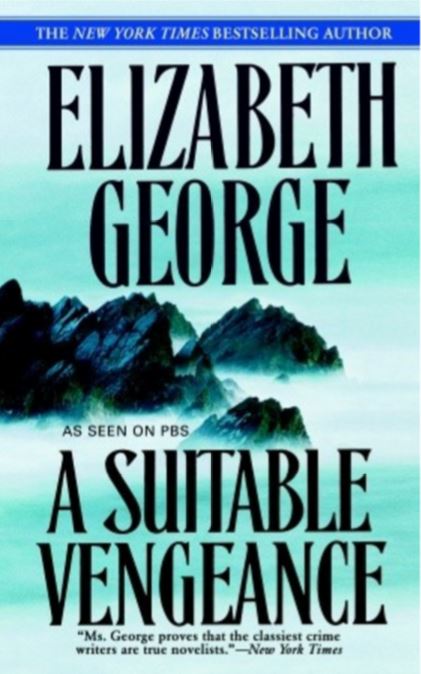 A Suitable Vengeance by Elizabeth George
A Suitable Vengeance by Elizabeth George
My rating: 3 of 5 stars
With A Suitable Vengeance, Elizabeth George takes a chronological break in her Inspector Lynley series and steps back into time to answer questions about the personal connection and history of the chief characters. Using omniscient 3rd person, she gives us a deeper look into what drives Thomas Lynley, Simon St James, Deborah Cotter, and Lady Helen Clyde. Peripherally but importantly, we also become more deeply acquainted with Deborah’s father, Mr. Cotter, caregiver/servant to St. James; Lady Dorothy Asherton, Thomas Lynley’s mother; and Peter Lynley, his brother. There is even a cameo appearance by Sergeant Barbara Havers. While familiarizing us with these complex and authentic characters, Elizabeth George also creates for us a multi-faceted murder mystery with seeming certainties becoming dead ends and secondary characters not always appearing what they seem (literally, at times!). The star of this particular tale is St. James and we can see his internal battles with love-lost and with brotherly devotion (to both his sister Sidney and to Thomas, his oldest friend) and with jealousy and with his innate physical vulnerabilities.
With every book in the series, I become a more ardent admirer of George’s ability to create literary counterpoint between character development and interplay (including the emotions and vulnerabilities of her chief players within the story and the colorful and largely well-thought-out secondary characters) and with the mystery itself.
And, she knows how to turn a phrase. Two which caused me to pause in my reading and write them in the “Quotes” section of my journal were:
St. James gazed out the window and sought a reply. He thought about the energy people expend in seeking to avoid what they most need to face. They fill their lives with distraction and denial, only to find at an unexpected eleventh hour that there is in reality no absolute escape.
The [Anchor and Rose] teemed with fisherman forced to shore by the weather as well as day visitors seeking shelter from the rain. Most of them were packed into the public bar. The formal lounge beyond it was largely empty.
In any other circumstances, two such diverse groups, inhabiting the same watering hole would hardly be likely to blend into a cohesive unit. But the presence of a teenaged mandolin player, a fisherman conversant with the Irish whistle, and a pale-legged man wearing running shorts and playing the spoons had broken the barrier of class and experience, melding what should have been motley into montage.
That last quote absolutely transported me to that pub. I could hear the music, feel the heat and closeness of the people, and could see the disparate clientele smiling, drinking, stomping their feet and singing in unity.
I find that as I read through this series, the Inspector Lynley books are often un-put-down-able for me; the highest praise I can give any book.
Why a mere three stars for this particular book in the series? They are due to the sheer implausibility of how Tina Cogin is introduced into the story, as a neighbor of Deborah Cotter’s. This happens early in the book and it left a gritty nose wrinkling for me right from the start. Throughout the book I found myself thinking, “Oh, please! You are such a good writer, Elizabeth! You of all people should have been able to figure out a more believable way to introduce this character. The coincidence here, the suspension of disbelief, is too much to ask of your readers.”
Thus, three stars. Still, the book was entertaining, well-informed, and inventive and I would definitely recommend it both to Inspector Lynley fans and to English murder-mystery fans and to those who simply enjoy a complex tale whose loose ends are, for the most part, ultimately, neatly tied away.

